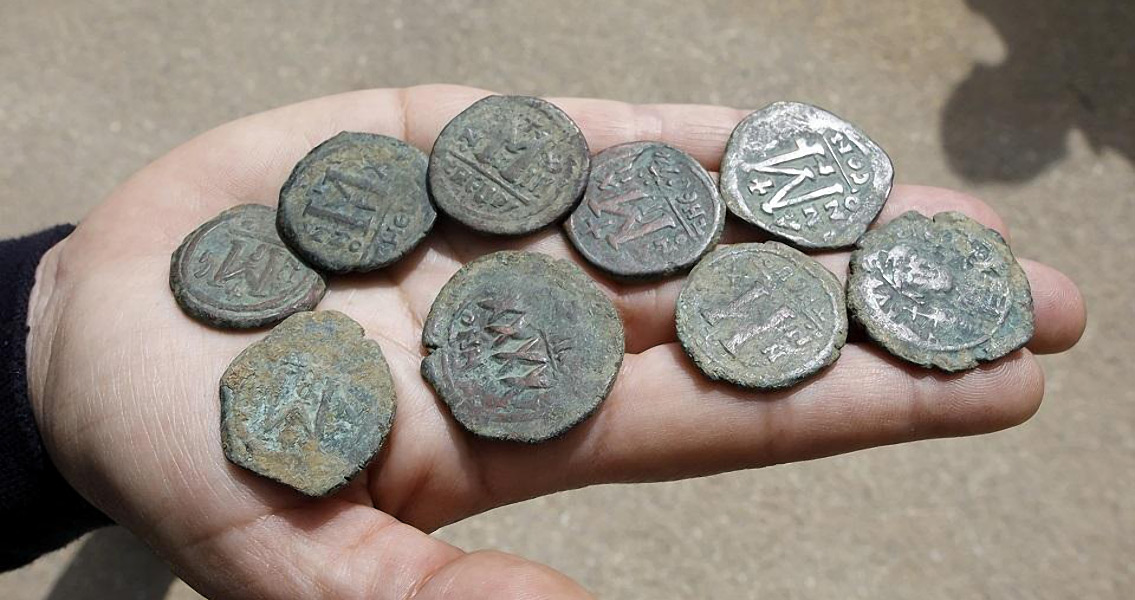<![CDATA[Archeologists with the Israel Antiquities Authority recently announced that construction crews working on a highway project near Jerusalem had unearthed a Christian village they believe offered refuge to travelers headed to the holy city over 2,000 years ago, and hidden within its walls was a rare collection of coins from the Byzantine-era. The cache of coins had stayed hidden for approximately 1,400 years in the undisturbed city, which researchers now believe was named Einbikumakube. It’s been reported that more than one third of the approximately 40,000 artifacts discovered every year in Israel are somehow inked to Christianity. In order to show the newly discovered coins to the media, the Israel Antiquities Authority recently provided journalists with a rare look around its main warehouse, located less than an hour from Jerusalem in Beit Shemesh. Since the creation of Israel in 1948, tens of thousands of artifacts discovered across the country have been deposited at the site, though some go on to be displayed at museums. A large number of the relics date from the period when Jesus is believed to have lived or are connected to his followers in the centuries that followed. Although some of the archeological finds may suggest how Jesus lived 2,000 years ago, they aren’t physical proof of his existence. The earliest evidence of a Christian movement dates to the late first century, “He was one of more than a million people living here then, an ordinary Jew who had original ideas and attracted some followers. His fame only really started after his death,” Gideon Avni, with the Israeli Antiquity Authority, told the National Post, adding, “It is difficult, perhaps even impossible, to find proof of one ordinary person from thousands of years ago.” However, based on finds from hundreds of archaeological digs, Avni believes archaeologists can accurately reconstruct Jesus’ life from the Church of the Nativity, the site revered as his birthplace, to the Church of the Holy Sepulchre, where he is believed to have been buried after the Crucifixion. Professor of Christian archaeology, Eugenio Alliata, explained to the National Post that the artifacts corroborate the biblical accounts of Jesus and his life, putting his existence into context. “We have not found any evidence of the person of Jesus, but we have found lots of things about what happened at the time he lived, such as the population and the material culture that grew because of him,” Eugenio Alliata, a professor of Christian archaeology at the Franciscan biblical school in Jerusalem, is quoted as saying. Image courtesy of MENAHEM KAHANA/AFP/Getty Images ]]>
Construction Workers in Israel Find Coins from the Time of Jesus
